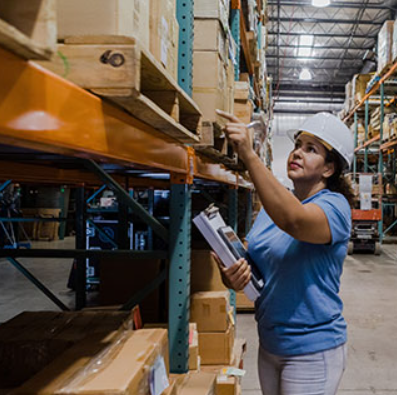
Is your company truly satisfied with its supply chain performance? If you’re like most businesses, the answer is likely no. It’s not uncommon to feel a sense of frustration when the performance metrics seem to plateau, particularly when your supply chain’s KPI graphs flatten out. So, why are companies struggling to reach best-in-class levels, and how can they break through? Let’s explore what sets the top supply chains apart and how you can move your business toward that elite status.
What Does Best-in-Class Mean for Supply Chains?
When we talk about best-in-class supply chains, we refer to the top 20% of performers within any industry—those companies that stand out for their operational excellence. Picture a pyramid: most companies are clustered at the bottom, while these top performers sit near the peak. And then, within this top 20%, there is an even rarer group—the top 2%—who are pushing boundaries and achieving remarkable results that defy traditional supply chain wisdom.
How Do Best-in-Class Supply Chains Perform Differently?
The distinction between a typical supply chain and a best-in-class one can be seen across several performance levels:
- At the bottom, there are companies that are “blissfully unaware” of their performance gaps.
- Above them, you’ll find those in the “good enough” category, which can be the most dangerous position to be in since it breeds complacency.
- Then, there’s the top 20%—the high performers that consistently deliver.
- Finally, the rare top 2% who set the bar for operational excellence.
Why Being Best-in-Class Matters
For years, traditional thinking dictated that higher service levels meant higher costs. This was the norm we all learned in business school. However, after over 25 years of benchmarking supply chains across various industries, a different story is emerging.
Best-in-class supply chains—particularly those in the top 2%—are not only delivering superior service but are also operating at half the cost of their competitors. For example, in retail, the average company spends about 11% of its sales on supply chain costs. In contrast, top performers operate at under 5%. That’s a massive gap, and it directly impacts the bottom line.
How do these high achievers pull it off? Three key factors stand out:
- Getting it right the first time – No rework, no returns, no firefighting.
- Obsessing over details – Small improvements compound to create massive gains.
- Leveraging the price-service relationship – Their excellent service makes them the preferred supplier, which drives more sales and allows for premium pricing.
The best-in-class approach creates a virtuous cycle: better service leads to lower costs, more satisfied customers, and, ultimately, stronger financial performance. Striving for this level of excellence is not just about bragging rights; it’s a fundamental strategy for staying competitive.
Why Isn’t Your Supply Chain Best-in-Class? Here’s What Could Be Holding You Back
1. Juggling Too Many Projects at Once
Many companies try to improve their supply chain by running multiple projects concurrently, each disconnected from the others. The reality? Spreading resources too thin means that none of the projects get the focus and attention they deserve, resulting in a lack of progress.
Rather than launching many initiatives, it’s more effective to focus on one or two key projects. Keep the scope manageable, and ensure that projects are aligned with broader business goals. Supply chain improvement is a continuous process, so prioritize and take it one step at a time.
2. Not Knowing Where the Most Value Lies
If you don’t regularly manage supply chain improvements, identifying the right areas to focus on can be overwhelming. Many companies make the mistake of launching projects without clearly understanding where the greatest value lies. The key is to identify opportunities where you can make meaningful improvements with minimal effort.
Start by focusing on two critical areas:
- Aligning your supply chain strategy with your overall business strategy: If they aren’t in sync, your supply chain improvements may not contribute to your company’s larger goals.
- Benchmarking and performance measurement: Understand how your supply chain is performing compared to industry standards and establish clear, relevant KPIs to track progress.
3. Lack of Performance Awareness
To improve, you need to know where you currently stand. Without benchmarking, you’re flying blind. Understanding your supply chain’s performance relative to similar businesses is essential for setting realistic goals and measuring improvement. Once you have benchmarks, you can create KPIs that are aligned with strategic objectives and track performance over time.
4. Resource and Expertise Shortages
Many companies don’t view supply chain management as a core function, leading to insufficient resources and expertise. Without skilled supply chain professionals, your improvement efforts will struggle to take off.
To overcome this challenge, you can either hire more experienced supply chain managers or invest in training your existing staff. Bringing in external help, such as consultants, is another option to help jumpstart improvement initiatives. Ultimately, building a strong internal supply chain team will pay dividends in the long run.
5. Lack of Integration and Collaboration
Supply chains don’t operate in isolation. They extend beyond your company’s walls and require collaboration across various internal departments as well as external business partners. If your organization is plagued by silos, supply chain improvement efforts will stall.
Fostering cross-functional collaboration is key. Select project team members based on their influence within their departments and ensure they are aligned with the project’s goals. This integration should be embedded into the company culture to create a seamless supply chain that operates as a cohesive unit.
Conclusion
Supply chain improvement is never an easy road, but it’s essential for staying competitive. Companies that achieve best-in-class status are operating at a fraction of the cost of their competitors while delivering superior service. To join the ranks of these top performers, start by focusing on a few key areas: prioritize your projects, understand where value lies, measure performance, invest in resources, and foster collaboration. The journey to best-in-class performance takes time, but the rewards—lower costs, better customer satisfaction, and stronger profitability—are well worth the effort.












